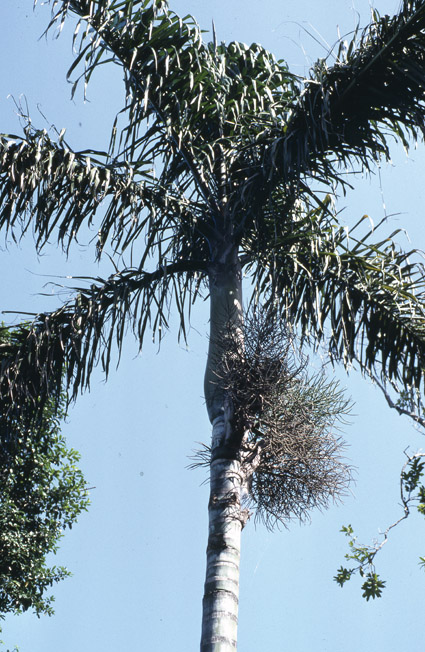- Acanthophoenix
- Acrocomia
- Actinokentia
- Actinorhytis
- Adonidia
- Aiphanes
- Allagoptera
- Ammandra
- Aphandra
- Archontophoenix
- Areca
- Arenga
- Asterogyne
- Astrocaryum
- Attalea
- Bactris
- Balaka
- Barcella
- Basselinia
- Beccariophoenix
- Bismarckia
- Borassodendron
- Borassus
- Brassiophoenix
- Burretiokentia
- Butia
- Calamus
- Calyptrocalyx
- Calyptrogyne
- Calyptronoma
- Carpentaria
- Carpoxylon
- Caryota
- Ceratolobus
- Ceroxylon
- Chamaedorea
- Chamaerops
- Chambeyronia
- Chelyocarpus
- Chuniophoenix
- Clinosperma
- Coccothrinax
- Cocos
- Corypha
- Cryosophila
- Cyphokentia
- Cyphophoenix
- Cyphosperma
- Daemonorops
- Deckenia
- Desmoncus
- Dictyocaryum
- Drymophloeus
- Elaeis
- Eleiodoxa
- Eremospatha
- Eugeissona
- Euterpe
- Gaussia
- Geonoma
- Guihaia
- Hedyscepe
- Hemithrinax
- Howea
- Hyophorbe
- Hyospathe
- Hyphaene
- Iriartea
- Iriartella
- Itaya
- Jailoloa
- Johannesteijsmannia
- Juania
- Jubaea
- Jubaeopsis
- Kentiopsis
- Kerriodoxa
- Korthalsia
- Laccospadix
- Laccosperma
- Lanonia
- Latania
- Lemurophoenix
- Leopoldinia
- Lepidocaryum
- Lepidorrhachis
- Leucothrinax
- Licuala
- Linospadix
- Livistona
- Lodoicea
- Lytocaryum
- Manicaria
- Manjekia
- Marojejya
- Masoala
- Mauritia
- Mauritiella
- Maxburretia
- Medemia
- Metroxylon
- Myrialepis
- Nannorrhops
- Nenga
- Neonicholsonia
- Neoveitchia
- Nephrosperma
- Normanbya
- Nypa
- Oenocarpus
- Oncocalamus
- Oncosperma
- Orania
- Oraniopsis
- Parajubaea
- Pelagodoxa
- Phoenicophorium
- Phoenix
- Pholidocarpus
- Pholidostachys
- Physokentia
- Phytelephas
- Pigafetta
- Pinanga
- Plectocomia
- Plectocomiopsis
- Podococcus
- Pogonotium
- Ponapea
- Prestoea
- Pseudophoenix
- Ptychococcus
- Ptychosperma
- Raphia
- Ravenea
- Reinhardtia
- Retispatha
- Rhapidophyllum
- Rhapis
- Rhopalostylis
- Roscheria
- Roystonea
- Sabal
- Sabinaria
- Salacca
- Saribus
- Satakentia
- Satranala
- Schippia
- Sclerosperma
- Socratea
- Solfia
- Sommieria
- Syagrus
- Synechanthus
- Tahina
- Tectiphiala
- Thrinax
- Trachycarpus
- Trithrinax
- Veitchia
- Verschaffeltia
- Voanioala
- Wallaceodoxa
- Wallichia
- Welfia
- Wendlandiella
- Wettinia
- Wodyetia
- Zombia
- x Jubautia splendens
- ?? Acoelorrhaphe
- ?? Bentinckia
- ?? Brahea
- ?? Clinostigma
- ?? Colpothrinax
- ?? Copernicia
- ?? Cyrtostachys
- ?? Dictyosperma
- ?? Dransfieldia
- ?? Heterospathe
- ?? Hydriastele
- ?? Iguanura
- ?? Incertae sedis & excluded names
- ?? Loxococcus
- ?? Micronoma
- ?? Paripon
- ?? Pritchardia
- ?? Rhopaloblaste
- ?? Serenoa
- ?? Washingtonia

Introduction
- Although the material of this palm is incomplete, it needs a name; it is clearly distinct, and severely threatened. The specific name is Greek for 'of the plateau', referring to the habitat. (Dransfield, J. & Beentje, H. 1995: The Palms of Madagascar)A
Distribution
Known from two sites on the western side of the central high plateaux. (Dransfield, J. & Beentje, H. 1995: The Palms of Madagascar)A
Discussion
- Probably closest to D. pilulifera. (Dransfield, J. & Beentje, H. 1995: The Palms of Madagascar)A
Diagnosis
- inter species maximas foliolis fasciculatis inflorescentiis multo ramosis pedunculo breve rachillis glabris endospermio ruminato distincta. (Dransfield, J. & Beentje, H. 1995: The Palms of Madagascar)A
Biology And Ecology
- Relict dry evergreen plateau forest in steepsided valleys; 1100-1450 m. (Dransfield, J. & Beentje, H. 1995: The Palms of Madagascar)A
Conservation
- Critical. Numbers within the two sites were low; both populations are without real protection, with their habitat under serious threat from annual fires as well as tree-cutting. (Dransfield, J. & Beentje, H. 1995: The Palms of Madagascar)A
Common Name
- Not recorded. (Dransfield, J. & Beentje, H. 1995: The Palms of Madagascar)A
Uses
- Not recorded. (Dransfield, J. & Beentje, H. 1995: The Palms of Madagascar)A
Description
- Solitary palm. TRUNK 8-20 m tall, 27-35 cm diam., near the crown c. 20 cm diam.; internodes 10-20 cm, grey-brown but distally green, nodal scars pronounced, 4-5 cm; crownshaft grey-green, covered in white wax. LEAVES tristichous, 6-11 in the crown, porrect to spreading; sheath grey-green, white-waxy, 80-157 cm, without auricles; petiole 25-35 cm long, channelled, densely scaly, 5.5-6 x 4.5-5 cm diam.; rachis c. 3.1 m, in mid-leaf c. 3.5 cm wide; leaflets 80-172 on each side of the rachis, in groups of 3-9 and fanned within the groups, stiff with the distal 1/3 pendulous, the proximal 80-93 x 1.7-2.1 cm, median 102-110 x 2-3.5 cm, distal 15-43 x 0.8-1.8 cm, main vein 1, plus thickened margins, with few ramenta to 8 mm long, otherwise glabrous, apices unequally bifid, attenuate. INFLORESCENCE infrafoliar, branched to 3 orders, spreading, 85-130 x 90-100 cm; peduncle 18-40 cm, c. 10 x 6 cm diam., glabrous; prophyll c. 72 x 20 cm, borne at c. 11 cm above the base of the peduncle, erect, split over its length; peduncular bract deciduous, inserted at 18 cm from the base of the peduncle, 87 cm long, 24 cm wide, closed for its distal 7 cm beak; rachis with c. 27 branched and 13 unbranched first order branches, these proximally 3.4-4 x 1.4-1.5 cm diam.; rachis bracts to 7 mm long; rachillae spreading-pendulous, cream, 10-37 cm long, 3.5-5 mm diam., glabrous, with distant (Dransfield, J. & Beentje, H. 1995: The Palms of Madagascar)A
Materials Examined
- Miandrivazo: Ambohitsaratelo, Nov. 1986 (fl., fr.), Dransfield et al. JD6446 (Holotype K; isotype TAN). Ankazobe: Manerinerina, April 1992 (fr.), Beentje et al. 4659 (K, TAN). (Dransfield, J. & Beentje, H. 1995: The Palms of Madagascar)A
- Log in to post comments

